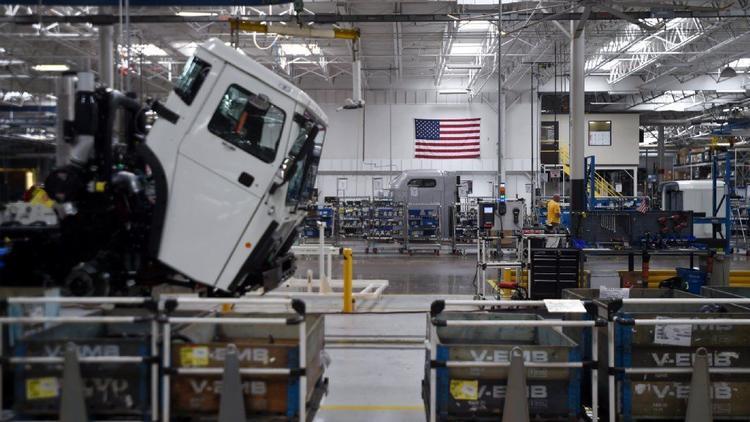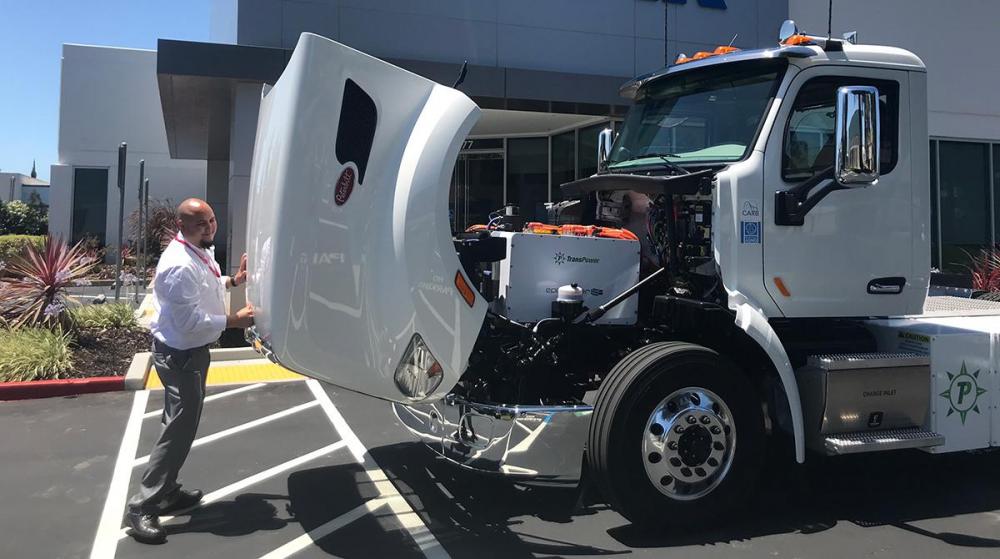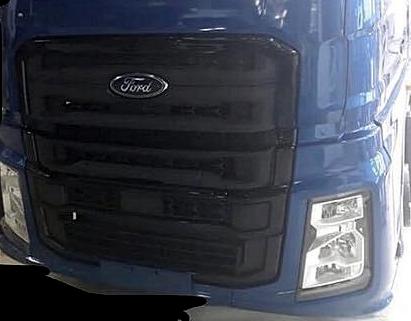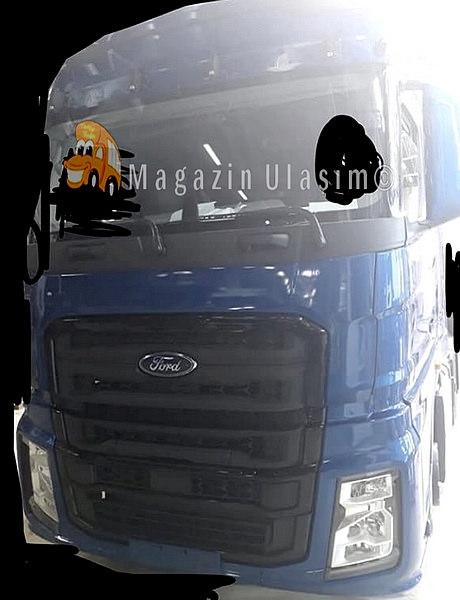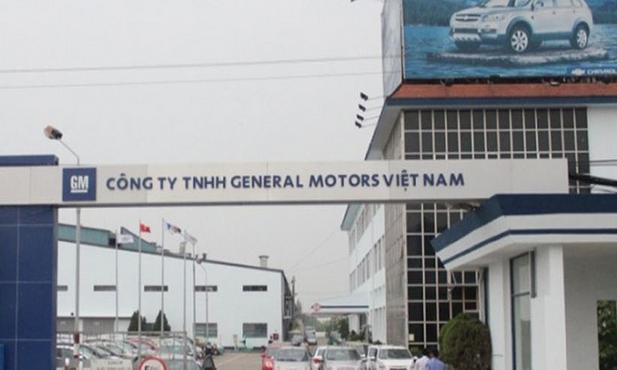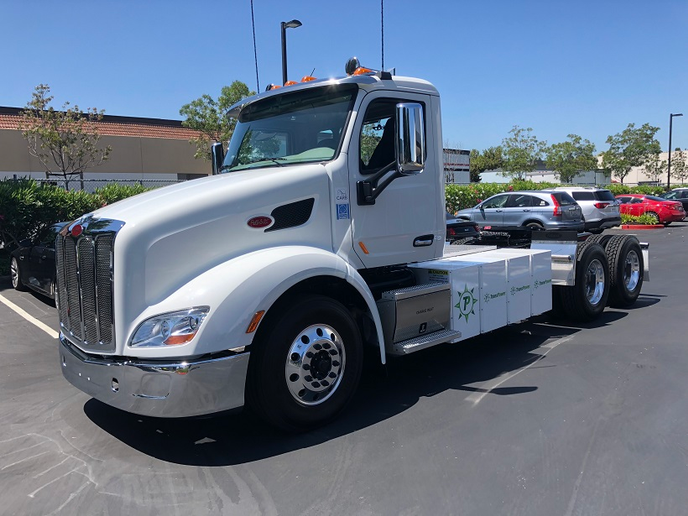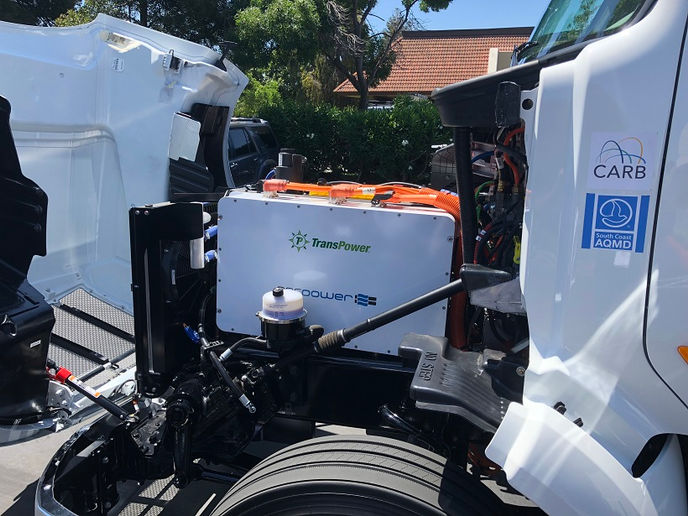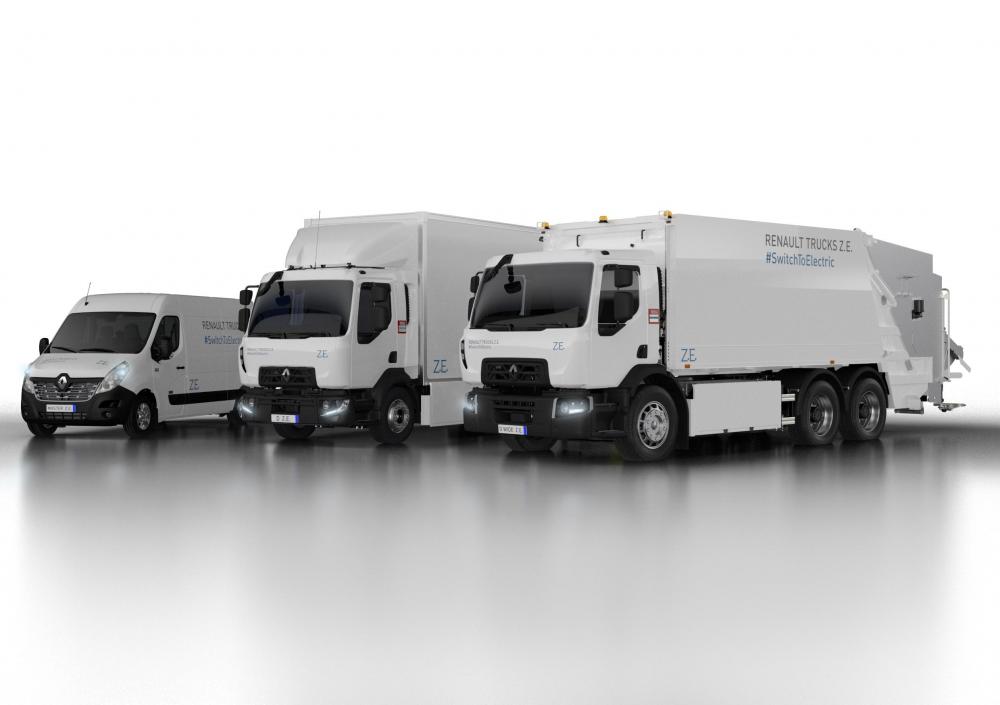
kscarbel2
Moderator-
Posts
18,818 -
Joined
-
Days Won
114
Content Type
Profiles
Forums
Gallery
Events
Blogs
BMT Wiki
Collections
Store
Everything posted by kscarbel2
-
Trailer-Body Builders / June 25, 2018 International Trucks is making air disc brakes standard for its HV and HX Series models. The HV507, HV607, HV513 and HV613 models, and the HX515, HX520, HX615 and HX620 models now feature Bendix ADB22X air disc brakes as a standard offering and are currently available for order. “Through the DriverFirst design philosophy, our product development team constantly evaluates how we can improve the driver experience,” said Mark Stasell, International’s vice president of vocational trucks. “Offering standard air disc brakes on the HV Series and HX Series is part of our uptime promise to build trucks with the latest safety technologies that stay on the road, and that drivers want to drive.” As part of International Trucks' commitment to providing safe, reliable trucks, the Bendix ADB22X disc brake from Bendix Spicer Foundation Brake – a joint venture from Bendix and Dana that supplies complete brake systems for OEMs – features a lightweight air disc brake design, allowing for increased payload, reduced stopping distance and extended brake system life. The ADB22X, rated for severe service, also offers the advantages of quicker pad replacement and longer pad life, leading to greater uptime and lower maintenance costs, International said. The HV and HX Series are purpose-built to deliver uptime for a full range of severe service applications. Redesigned from the inside out, the HV Series interior was crafted with driver and body company feedback to ensure the most comfortable and productive environment possible, while the exterior boasts “powerful” styling. The HV Series features the intelligence of the Diamond Logic electrical system for the automation of tasks, and interlocks to help protect both equipment and crew. Furthermore, both HV and HX Series trucks offer customers a versatile foundation for any configuration necessary at any job and include power options like the International A26 – an engine designed with uptime in mind.
-
The Morning Call (Allentown, PA newspaper) / June 28, 2018 Back on March 23, 2017, President Donald Trump welcomed trucking industry representatives to the White House in Washington, D.C., for a discussion on health care. During their visit, Trump, wearing a “I [heart] truckers” pin, climbed into the cab of a Mack truck parked on the lawn, pumped his fists and pretended to drive the stationary big rig. He then honked the horn six times in four seconds, bringing laughs and cellphone snapshots from the onlookers in suits crowded around the truck. Some things have changed since then. For one, the Trump administration finds itself in an intensifying trade war with other countries, including Europe — a battle putting pressure on the company that assembled the truck that Trump had so much fun in 15 months ago. That’s because Mack Trucks, which assembles its heavy-duty rigs in Lower Macungie Township and is owned by Sweden’s Volvo Group, uses treated steel from Europe in its production process, spokesman Christopher Heffner confirmed. He wouldn’t disclose what specifically the imported steel is used for, citing competitive reasons. The Trump administration’s tariffs on European steel and aluminum mean Mack is paying 25 percent more for that treated steel, and Heffner noted the company is unaware of an appropriate American-made substitute. In addition, Heffner said, Mack already buys a large amount of U.S.-produced steel, but those prices, too, are at risk of rising because, as a result of the tariffs, American steel-makers won’t be competing with lower-cost imports. “Depending on how this issue evolves, being a U.S. manufacturer could become a competitive disadvantage,” Heffner said, noting, however, that the future of Mack’s Lower Macungie plant is not in jeopardy. Mack is the largest Lehigh Valley employer to date to talk about how the tariffs are affecting its business. While the company is headquartered in Greensboro, N.C., Mack employs about 2,400 people at its assembly plant in Lower Macungie — a 1 million-square-foot facility in which $84 million has been invested in recent years to make it more modern, integrated and efficient. While Trump campaigned on a promise to rewrite trade agreements and protect U.S. jobs from unfair foreign competition, a company such as Mack Trucks could get hurt because many of its peers manufacture trucks in Mexico, according to a June 21 article in The New York Times. Vehicles built in Mexico are not facing tariffs when imported into the United States, the article noted. The New York Times article used the situation at Mack Trucks to show how “the global nature of supply chains means the tit-for-tat tariffs are ricocheting in unexpected ways and may ultimately cost jobs in the United States.” It also noted the example of German carmaker Daimler AG, which said retaliatory tariffs from China will hurt the sales of the SUVs it builds in Alabama. Some companies have already taken more drastic measures. This week, Milwaukee-based Harley-Davidson announced it would move the production of its motorcycles sold in Europe from the United States to facilities overseas, a move being made to avoid the retaliatory tariffs from the European Union on American exports. In a filing with the U.S. Securities and Exchange Commission, Harley-Davidson said the tariffs add about $2,200 to the average motorcycle exported from the United States to the European Union. In the Lehigh Valley, the tariffs have hurt some but helped others. For a company such as Lehigh Valley Plastics in Bethlehem Township, the tariffs present an opportunity to urge customers to opt for plastic instead of steel. But for manufacturers that need raw materials from foreign countries, the tariffs are becoming a burden. Some area business leaders have maintained the tariffs, while creating short-term struggles for some companies, will ultimately lead to a more level playing field. Despite the tariffs, Heffner stressed Mack has no plans to move the plant’s work to another location. “We have heavily invested in the [Lehigh Valley] plant, and it is a key part of our U.S. industrial base,” he said. But the increased costs for imported steel don’t come at a convenient time for Mack, which is ramping up production of its new highway truck, Anthem, and trying to grab a larger market share in North America. In the first quarter, Mack’s market share declined from 8.9 percent to 6.5 percent. The plant, however, has plenty of orders to fill. Mack’s net order intake in North America increased 64 percent in the first quarter to 9,335. Or as Volvo Group CEO Martin Lundstedt described it to The New York Times, the plant is “packed with orders.” But he told the newspaper rising costs in the United States and a trade feud could hinder demand. “It could be that if you have production in the U.S., you are punished,” Lundstedt told The Times. .
-
Behind the Wheel of an Electric Peterbilt Model 579
kscarbel2 replied to kscarbel2's topic in Trucking News
-
James Jaillet, Commercial Carrier Journal (CCJ) / June 27, 2018 Lawmakers from the U.S. House have sent letters to the U.S. Environmental Protection Agency requesting that the agency’s Inspector General investigate potential improper contacts between EPA staffers and Volvo Trucks regarding research into glider kit truck emissions. The letters are the latest development in the ongoing debate over whether the EPA should strip Obama-era emissions regulations placed on glider kit trucks, which opponents argued threatened to kill the glider kit industry. In one letter, Rep. Greg Gianforte (R-Montana) says that EPA career employees were in email communication with Volvo employees to arrange a study to test the emissions of glider kits “without the knowledge or approval of EPA leadership.” Volvo supplied glider kits to EPA staffers for the test, which Gianforte argues makes the study’s conclusions questionable, given Volvo’s active opposition of repealing glider kit emissions regulations. Another letter asking for an investigation was filed by four other House Republicans: Reps. Bill Posey (Florida), James Comer (Kentucky), Steve King (Iowa) and Brian Babin (Texas). The latter four are members of the House’s Oversight Committee. Volvo says its work to lobby in favor of regulating emissions of glider kit trucks is standard practice and posed no ethical or legal issues. “Like most of the trucking industry, the Volvo Group for several years now has argued that the improper use of glider kits is bad for the environment and unfair to manufacturers who have invested in the latest environmental controls. All our communication and cooperation with the EPA on this issue has been an entirely appropriate part of a broad trucking industry advocacy effort – we did nothing improper,” Volvo said in a statement to CCJ. In addition to Volvo (which owns Mack), Cummins and Daimler also lobbied against the repeal of the glider emissions restrictions. Volvo does not offer truck bodies for use as gliders. Most gliders are Paccar brands — Peterbilt or Kenworth — or Daimler vehicles, Freightliner and Western Star. The study by EPA found that glider kits produce greater emissions of greenhouse gases and particulate matter than new trucks. It was filed with the EPA in November, two months after the EPA proposed a rule to rescind glider kit regulations. Gianforte’s letter also accuses a former employee of the Engine Manufacturers Association of violating lobbying laws in his or her contact with EPA staffers while the study was being conducted. The move to repeal glider emissions regs would allow glider kit builders like Fitzgerald Glider Kits and Harrison’s Truck Centers to continue to install older, remanufactured engines and transmissions into new truck bodies and chassis. The glider emissions restrictions were part of the sweeping Phase 2 emissions regulations enacted in 2016. They require truck, engine and trailer manufacturers to reduce greenhouse gas emissions by roughly 25 percent over the course of a decade and would have held gliders to the same emissions standards as new trucks. The EPA’s proposal to reverse the glider emissions regs would only remove the glider-specific portions of Phase 2. As it stands, glider makers are left in limbo, given that the emissions regulations took effect in January. Absent a final rule from EPA, glider kit makers would have a yearly cap of 300 units that do not comply with Phase 2 regs. A competing study on gliders, funded by Fitzgerald Glider Kits and conducted by Tennessee Tech University, has also come under scrutiny. Tennessee Tech said earlier this year it is investigating concerns raised by faculty members about the study and its conclusions. That study concluded that gliders do not produce emissions of greenhouse gases and particulate matter at a rate greater than that of new trucks. Tennessee Tech asked the EPA to ignore the study’s conclusions until its investigation is complete.
-
Transport Topics / June 29, 2018 SUNNYVALE, Calif. — The strength of the overall economy, helped especially by the healthy construction and housing markets as well as fleets’ desires to have late-model equipment to recruit and retain drivers, is bolstering sales for Peterbilt Motors Co. Retail sales for Class 8 trucks in the United States and Canada are on track to reach 265,000 to 285,000 this year, and Peterbilt is positioned to set market-share records for the second year in a row, according to Jason Skoog, general manager for the truck maker, owned by Paccar Inc. He made the comments June 27, during a media event at the Paccar Innovation Center here. The company displayed its 579 UltraLoft, previewed current developmental projects such as a Level 4 autonomous truck and an electric truck, and announced new options on its equipment. Skoog said Peterbilt has more than 2,500 orders for the Model 579, which begins production on July 2. He also said the UltraLoft sleeper has brought Peterbilt new customers. What’s more, the manufacturer announced that the Paccar MX-11 engine is now available with the Paccar transmission. As for electric vehicles — which include the 520 refuse truck, the 579 and the 220 — it showcased the electric demonstration model Class 8 tractor that is well suited for drayage operations. “In the near term, applications that make sense for electric trucks include inner-city delivery, refuse and drayage,” Skoog said. Matthew Vito, integration and commissioning manager at TransPower, a partner with Peterbilt on the tractor, said the unit on display had eight battery packs that each weighed slightly more than 800 pounds and more battery storage can be added behind the cab. The vehicle gets 150 to 250 miles per charge depending on the use, and Vito said the truck does best in applications with frequent stops and low speeds. Peterbilt is testing the equipment throughout the year. “The whole goal is to ensure we can make the business case so the customers can have the return on investment,” Skoog said. “We’re going to be testing those in real-world applications and once we have that, we’re going to share it with our customers.” Peterbilt also announced two new options to its existing Models 567 and 579 trucks: an alert switch in the sleeper control panel, and a pass-through seat. The alert switch in the sleeper flashes external lights and sounds alarms when activated. The manufacturer developed it with the organization Women In Trucking. “If an operator is in the cab and feels threatened, they can push the red button that will sound the horn,” said Scott Newhouse, chief engineer at Peterbilt. The pass-through seat was also introduced in response to customer input to help drivers when they are packing their vehicles. It’s a storage cabinet located under the passenger seat and accessible from both the inside and outside of the cab so that drivers can load the cabinet before climbing into the cab, and unload it once they are inside the truck. In addition, Peterbilt has made Bendix Wingman Fusion standard on all Peterbilt Model 579 trucks built as of July 1. The technology provides cameras and radar, and can reduce throttle and more. “It helps monitor following distance, has autobraking, adaptive cruise control, lane departure warnings and over-speed alerts,” Newhouse said. Peterbilt is also extending its investment in augmented reality for service. In a demonstration David Yin, a company IT project manager, showed how users can interact virtually with schematic information from the vehicle. Repairs done with the technology have resulted in a 15% to 20% efficiency gain, according to Yin, allowing dealerships to get drivers back on the road faster. Initial tests have proven the business case for the technology, which Skoog said should be rolled out to Peterbilt dealerships next year. Peterbilt, based in Denton, Texas, has a dealer network of 372 locations. Skoog said that is expected to grow to 390 locations by the end of the year. Peterbilt is working on advanced driver assistance systems, advanced powertrains, machine learning and vehicle connectivity. The Level 4 autonomous truck would use cameras, radar and lidar. Jake Montero, general manager of the Innovation Center, said Peterbilt is working to understand what the business case is for much of the latest technology. The center has a five-bay truck lab, which includes a fabrication center, and space for 50 employees. He unveiled a potential timeline for rolling out new systems, including platooning, predictive maintenance and lane-keeping technology in 2019, object detection in 2020 and autonomous technology in 2021. Since November some 125 startups have met at the center, said Paul Konasewich, director of business development at the Innovation Center. He said part of Paccar’s goal is to educate startups on how trucking works, how its customers operate and what makes business sense for them. In the near future, Peterbilt will be launching traffic jam assist, lanekeeping and platooning. “These are the building blocks for us to bring additional capabilities to our customers in the future,” Newhouse said. .
-
U.S. Army Places $484 Million Order for 1,574 Joint Light Tactical Vehicles Oshkosh Defense / June 30, 2018 Oshkosh Defense announced today that the U.S. Army has placed a $484 million order for 1,574 Joint Light Tactical Vehicles (JLTV) and associated installed and packaged kits. This press release features multimedia. View the full release here: https://www.businesswire.com/news/home/20180629005807/en/ “This latest order follows the completion of the Multiservice Operational Test and Evaluation (MOT&E) conducted by the U.S. Army and Marine Corps and further demonstrates that the JLTV program continues to be a top modernization priority for our armed services,” said George Mansfield, Vice President and General Manager of Joint Programs at Oshkosh Defense. “The JLTV is ready to support our troops, and we look forward to getting more soldiers and Marines into this extremely mobile, protected, and proven next-generation light tactical vehicle.” In addition to the recently completed operational testing, the JLTV also completed Reliability Qualification Testing earlier this year, accumulating over 100,000 miles and exceeding reliability requirements. To date, Oshkosh has produced more than 2,000 JLTVs and has delivered more than 1,600 JLTVs to the U.S. Army and Marine Corps. A Full Rate Production (FRP) decision is expected in FY19.
-
-
Agreed. Everyone studies everybody. All we and the Soviet Union did after WW2 was copy captured German technology.
-
Foreign companies can not own more than 50 percent of a joint venture with a China domestic company.
-
Big business is at our helm. And with the power they have over our government, we are where we are today. It was US companies who sent production abroad to China and elsewhere. Those countries didn't ask for it. Big business wanted the savings. It should come as no surprise to any intelligent person that we have a trade deficit with China, when big business chooses to produce in China, and many other countries, for the US market. China is smart, requiring global companies in key industries to produce there.....if they want to sell and profit there. On the flip side, the US government, at the behest of US automakers, paved the way with NAFTA allowing them to shift US market production out of the country to Mexico and elsewhere.
-
GM to transfer Vietnam operation to Vingroup's car arm, eyes sales boost Reuters / June 29, 2018 HANOI -- General Motors has agreed to transfer its Vietnamese operation to VinFast Trading and Production LLC and distribute Chevrolet cars through the local carmaker, in a move that could help drive up its modest sales in the country. The U.S. automaker will transfer full ownership of its Hanoi factory to VinFast for the Vietnamese firm to produce small cars under a GM global licence from 2019, the companies said in a statement on Thursday, without disclosing a value for the deal. As part of the deal, VinFast, a unit of Vietnam's biggest private conglomerate -- Vingroup JSC, will be the exclusive distributor of Chevrolet in Vietnam. "The GM-VinFast strategic partnership will best position the Chevrolet brand and dealer network for long-term growth in Vietnam by leveraging GM's global scale and expertise, married with VinFast's domestic strength and insight," said Barry Engle, executive vice president and president of GM International. The transfer, which includes GM's Hanoi plant, dealer network and employee base, is expected to be conducted by the end of 2018, the companies said in the statement. GM used its Hanoi plant to assemble Chevrolets with parts imported from South Korea -- a country where the U.S. automaker came close to bankruptcy as it struggled to turn around its debt-laden unit. GM Korea is GM's biggest production base in Asia excluding China. The plant will be used solely to produce VinFast cars after the transfer, while Chevrolet cars will be imported. VinFast said this partnership with GM was "integral" to its plan to "launch a portfolio of five VinFast vehicles in 2019". It is building a $1.5 billion factory in the northern province of Hai Phong and plans to launch a sedan and SUV in the third quarter of 2019, and a small car, electric car and electric bus by end-2019. "Our vision is to build an automobile manufacturing eco-system that will include assembly plants, local automotive suppliers and dealers, and a string of supporting industries," said VinFast CEO Jim DeLuca. Vietnam's automobile sales grew 24 percent in 2016 but fell 10 percent last year to 272,750 units, data from the Vietnam Automobile Manufacturers' Association (VAMA) showed. Sales fell 6 percent in the first five months of 2018. While GM's sales in Vietnam have been rising since 2014, its numbers last year were only an eighth of the country's market leader, local Truong Hai Auto Corp, and a sixth of runner up Japanese rival Toyota Motor Corp, VAMA data showed. Sales of Chevrolet, the only vehicle GM offers in Vietnam, grew 8.5 percent to 10,576 units in 2017, lagging gains of 34.5 percent in Indonesia and 25.7 percent in Thailand. Chevrolet Vietnam - http://en.chevrolet.com.vn/vehicles/cars.html .
-
The scary part Paul is that they're not copying any more (no more than anyone else). Rather, they're now developing their own technology......they've learned how to run with the ball. They have the ability to invest deeply, and make quick decisions to do so. The fighters aren't U.S. tech-based, rather it's an outgrowth of the Sukhoi SU-33 (purchased tech). But they made a lot of changes....themselves, resulting in a more capable aircraft.
-
Daimler adds 2 electric truck models in race with Tesla, VW
kscarbel2 replied to kscarbel2's topic in Trucking News
Penske, NFI to Test Daimler’s Electric Trucks in Regular Operations Heavy Duty Trucking (HDT) / June 27, 2018 Penske Truck Leasing and NFI have agreed to partner with Daimler Trucks North America in operating the Freightliner Electric Innovation Fleet of electric vehicles which includes the recently unveiled heavy-duty eCascadia and eM2 106 medium-duty trucks. Through its Innovation fleet of 30 vehicles, DTNA will involve customers in the development of commercial electric vehicles in order to better understand how they will be used and where they will be most effective. Penske will take on 10 eCascadias and 10 eM2s for use in California and the Pacific Northwest, while NFI will use 10 eCascadias for drayage activities in Southern California. The Innovation Fleet will start delivering vehicles to Penske and NFI as soon as late 2018. To speed up the development process, DTNA will also operate electric trucks within its own Product Validation Engineering test fleet in Oregon. The company plans use knowledge gained form these partnerships to prepare its facilities and fleet operations for electric trucks as soon as 2021. “Running multiple trucks in real-world applications will provide better insights for our engineers into the requirements of integrating electric commercial vehicles into fleet operations," said Roger Nielsen, president and chief executive officer of DTNA. "We are partnering with these two customers for this phase of the co-creation process because they have use cases that closely fit the target applications we have identified.” DTNA has also announced the Electric Vehicle Council has been tasked with preparing customers in evaluating and integrating electric vehicle solutions into their operations. The information from Innovation Fleet testing will be shared with the customer base through the Council. It will also discuss planned product offerings with customers and gather feedback as the company moves toward commercializing electric trucks. The Electric Vehicle Council will also work with customers to establish the necessary charging infrastructure, vehicle deployment, and service support that will be required when electric trucks become commercially available. DTNA also plans to offer consulting services to assist with site selection based on truck applications, available government incentives, infrastructure deployment, and route identification as part of a preliminary review prior to commercial electric vehicle business proposals. "The DTNA approach to bring commercial electric vehicles to market is holistic. With the Freightliner Electric Innovation Fleet, we will be working, hands on, with Penske and NFI," said Richard Howard, senior vice president, sales and marketing, Freightliner Trucks. "While heavy-duty electric vehicles present the greatest engineering challenges, we're committed to a process that leads to series production vehicles that are safe, reliable and efficient.” -
Jack Roberts, Heavy Duty Trucking (HDT) / June 27, 2018 Peterbilt showcased the Paccar Innovation Center in Sunnyvale, California, to demonstrate its continuing efforts to identify, develop and deploy emerging technologies in trucking. Located in the heart of famed Silicon Valley, the Paccar Innovation Center also works closely with Kenworth and Paccar’s wholly owned European brand, DAF, on three core developmental areas, according to Jason Skoog, Paccar vice president and Peterbilt’s new general manager of Connectivity, Driver Interface systems and Driver Assistance Systems. The Paccar Innovation Center is a small, but ultra-modern facility that includes space for 50 full-time employees, a five-truck work bay, as well as meeting and collaboration spaces. A Paccar Experience features various displays, including the futuristic WAVE concept truck developed in conjunction with Walmart a couple of years ago. Just as importantly, Skoog said, is the center’s location in the heart of Silicon Valley, which gives Paccar engineers and designers access to many of the sharpest minds and start-up companies shaping emerging transportation technology. In fact, he noted that Paccar has met with more than 125 separate tech start-ups in the area since last November. At the Innovation Center on June 27, Peterbilt showcased for trucking reporters several current developmental projects, including a Level 4 autonomous truck and two Class 8 electric trucks, in addition to highlighting its efforts to coordinate next-generation research and identify emerging technologies that will benefit future vehicle performance. The Innovation Center is also accelerating partnerships in the development of electric and hydrogen fuel cell powertrains, as well as the deployment of big data analytics. “Purposeful innovation is continuously engrained into every aspect of our business and it means we will be ready to deliver innovative options to our customers and their drivers,” Skoog said. “The Paccar Innovation Center allows Peterbilt to connect with and leverage the advancements being made by technology companies in Silicon Valley. When combined with the talented and experienced Peterbilt employees and worldwide Paccar resources, we have a team that will deliver innovative products and services now and into the future.” To highlight the work being done at the Paccar Innovation Center, Peterbilt offered CDL-holders the chance to take the demonstration model of its electric Model 579 for a brief evaluation run through the silicon heart of Sunnyvale, California. The truck is being developed in partnership with TransPower, an electric vehicle-focused tech startup in the area that is looking to become a Tier 1 supplier of vehicle electrification component and technology for the trucking industry. Matthew Vito, a systems engineer with TransPower, was on hand as a minder during the test drives and to answer questions or generally explain how the truck operates. Peterbilt and TransPower have been working together on electrification projects since 2015. From the exterior, there are only a few clues that you’re not dealing with a conventional diesel-powered Model 579 tractor — chiefly the “eight-pack” battery assemblies on the frame behind the cab. These are 44-kw battery packs that give the truck up to 250 miles of range in highway driving conditions. Vito said each individual battery pack weighs approximately 800 lbs. I was curious to know what was sitting under the hood in place of a conventional diesel engine, and Vito was happy to show me the power inverter and converter system that reside in that space on this truck. This is essentially a sophisticated power management system that collects, stores and distributes electric power as needed during driving operations, both from the battery packs themselves, and from the truck’s kinetic-energy braking system, which converts forward inertia into energy and captures it for future use. Interestingly, Vito said, the system is remarkably efficient in terms of both range and recharging capability, needing only four hours connected to TransPower’s proprietary charging systems to retain a full change. Peterbilt engineers opted to keep things familiar when it comes to their electric truck design. Nothing in the cab seems abnormal or out of place. Everything is right where it ought to be, doing right what it ought to be doing. There is, for example, a full air brake system on the electric Model 579, that engages and disengages with the familiar yellow and red knobs on the dash. And there’s a full-blown, normally functioning Eaton automated transmission as well, with its control panel mounted flush in the center section of the dashboard. I was under the impression that electric vehicles don’t need conventional transmissions to operate. And they don’t. But that doesn’t mean they can’t take advantage of their benefits. Vito explained to me that most electric trucks use massive-sized electric motors with continuous torque curves — just like on a golf cart. But, he said, Peterbilt’s choice of a conventional AMT means that TransPower is able to fit the truck with two, much smaller electric motors in sequence. These electric motors have a much shorter torque curve than the big motors. But that’s where the transmission comes into play, taking the torque the two motors produce and turning it into usable power. This saves on space and weight as well, Vito noted. Putting the truck in “Drive,” just as I would on a diesel-powered truck, and disengaging the parking brake had the electric Model 579 jumping forward with surprisingly quickly response to the throttle inputs. The predominant noise at those point comes from the whine given off by the truck’s hydraulic system, as well as the normal chassis and suspension noises you tend to hear, along with an occasional pop front the air brakes. But that’s about it. The electric Model 579 shifts out at the same speed and torque points a diesel engine would, so the overall feel while you’re driving is extremely familiar. In fact, if you had someone playing diesel engine sounds over the truck stereo, I’d be willing to bet more than a few experienced drivers wouldn’t know right away that they were actually driving a truck equipped with an electric drivetrain. The first giveaway that they were running a diesel would probably be when they put their foot in the throttle and felt the truck take off from a dead stop. Granted, we were running bobtail on our little route through Sunnyvale. But the acceleration this truck’s electric drivetrain offers is nothing short of astounding. Beyond that, this is really a story of no new news to report, The Peterbilt Model 579 rides, drives, handles and feels exactly identical to any other diesel Model 579 daycab you’ve ever driven. Again, the only real differences are the lack of a diesel engine hammering away up in front of you and the attention-grabbing acceleration rate when you put your foot down on the accelerator. For now, this electric Model 579 is simply a demonstrator truck, intended to showcase both Peterbilt’s work in the electric vehicle realm and the viability of the concept in real-world fleet operations. The company hasn’t made any decisions yet on putting it into production, and likely won’t be in a hurry to do so, if Skoog’s comments earlier in the day are any indication. Speaking on Peterbilt’s approach to new technology, he noted that the company wants to stake out leadership positions with any viable new technology, but is not interested in forcing anything on anybody until they are interested. For Peterbilt, he said, this means ensuring that there is a real-world demand for the product, that it can perform as expected in those real-world operations, and that there must be a reasonable and timely return on investment for the use of that technology. Today’s demonstration drive proved that Peterbilt is ready and waiting to go when the electric truck market begins to blossom in North America and will be able to meet customer and driver expectations for that technology when it does. .
-
Wake-Up Call .
-
https://www.bigmacktrucks.com/topic/46089-limited-edition-diamond-t-glider-kit-offering-unveiled/?tab=comments#comment-339569
-
Ford hits carbon emissions target 8 years early Michael Martinez, Automotive News / June 27, 2018 DETROIT -- Ford Motor Co. says it has met a self-imposed goal of slashing manufacturing-related emissions eight years ahead of schedule. The company in 2010 pledged to cut carbon dioxide emissions from its carmaking processes by 30 percent within 15 years. Thanks to a number of energy-conservation initiatives, it achieved its goal in half the time. Ford announced the achievement as part of its 2017-18 Sustainability Report, saying it reduced global manufacturing CO2 emissions by more than 3.4 million metric tons from 2010 to 2017. That's equivalent to greenhouse-gas emissions from more than 728,000 passenger vehicles driven for one year, it said. "We thought that was aggressive and we didn't really know how we were going to achieve it," Andy Hobbs, global director of Ford's environmental quality office, told Automotive News. "It was an aspirational goal." The automaker hit its target by installing more than 100,000 LED light fixtures and adding solar panels to a number of plants across the globe, including its Dearborn Truck Plant and Michigan Assembly Plant near Detroit. It also updated its painting techniques, eliminating drying ovens to reduce energy. Another way it reduced its carbon footprint involved a process in which a machining tool is lubricated with a finely atomized mist instead of a larger quantity of coolant and water. "The beauty of Ford manufacturing folks is, once they accept a task, they throw everything, including the kitchen sink, to achieve it," Hobbs said. The company is working on what its next goal will be and will announce it this year, Hobbs said, noting that it will involve additional CO2 reductions as well as adding more renewable energy practices. Already, Ford makes around 300 parts from renewable materials. It uses eight sustainable materials in production vehicles: soy, wheat, rice, castor, kenaf (hibiscus), tree cellulose, jute and coconut. Hobbs said the automaker would stick with the guidelines offered by the Paris climate accord to reduce vehicle emissions, even though the U.S. has formally backed out of the deal. He said Ford's goals were unchanged by the Trump administration's decision. "As a company, at the highest levels, we've been very clear that we think climate change is real," he said. "We support the notion of fuel efficiency for our vehicles, and CO2 reduction for our manufacturing facilities."
-
Sounds like you want the cowl vent. Armed with your truck's model and serial number, give the good folks at Watt's Mack a call at 1-888-304-6225. If it's still available, they'll be glad to help you.
-
Renault Trucks Press Release / June 26, 2018 After ten years of experimentation under actual operating conditions with its customer-partners, Renault Trucks is pleased to unveil its second generation of all-electric vehicles: the Renault Master Z.E., Renault Trucks D Z.E. and Renault Trucks D Wide Z.E., a complete range from 3.5 to 26 tonnes ideally suited for use in the city. The Renault Trucks D and Renault Trucks D Wide Z.E. will be manufactured in the Renault Trucks plant at Blainville-sur-Orne and will arrive on the market in 2019. The Renault Master Z.E. will be available in 2018. To keep pace with the changing face of urban transport, Renault Trucks, a pioneer in the field of electromobility, is launching its second generation of electric trucks. The Renault Trucks Z.E. line-up, consisting of the Renault Master Z.E., Renault Trucks D Z.E. and Renault Trucks D Wide Z.E., ranging from 3.5 to 26 tonnes, covers the full gamut of urban uses from goods distribution and delivery to refuse collection. Renault Trucks has been preparing for the shift to electric vehicles for the past ten years. For Renault Trucks, electromobility was the obvious response to urban air quality and noise issues from the outset, as well as cut overall CO2 emissions. For over ten years, the company has been field testing electric trucks with its customer-partners in order to garner crucial information about usage, battery behaviour, charging facilities and specific maintenance requirements. These real-world tests have also enabled Renault Trucks’ customer-partners to help their own customers come to an acceptance of electric technology. Renault Trucks has over a decade of experience with all-electric trucks thanks to the Renault Maxity. “Ten years’ ago, we were the pioneers, promoting electric trucks to improve city air quality”, explains Renault Trucks President Bruno Blin “Today we can offer a range of electric vehicles with proven performance and the experts in our network are ready to help our customers transition to electromobility. Ten years’ ago we were pioneers, today we are experts.” Zero emission in use for unrestricted access The latest technological advances have made electric trucks an economically viable alternative for hauliers, leading Renault Trucks to launch a complete Z.E. range. However strict the regulations may be in urban zones, the vehicles in the Renault Trucks Z.E. operate seamlessly in compliance. They are the perfect solution to safeguard air quality and reduce congestion as they allow noise-free out-of-hours deliveries and emit neither local pollutants nor CO2. Some prominent names in freight haulage have already opted for electromobility. One such company is XPO Logistics “At XPO, we have led by example as the transport industry becomes increasingly aware of the need for alternative power”, said Luis Gomez, managing director-transport, XPO Logistics Europe. “We commend our supplier Renault Trucks for investing in the development of electric vehicles that offer a practical way to achieve zero emissions*. Renault Trucks is shaping the future of commercial transport in an evolving regulatory environment.” Suez is also following the release of the Renault Trucks Z.E range with interest. “We are delighted to see a competitive new industrial solution arrive on the market and to be able to partner with Renault Trucks,” explains Edouard Hénaut, executive director local authorities services at Suez. “This new electric truck offering will allow Suez to help its customers reduce their carbon footprint thanks to a zero-emission environmentally-friendly and silent refuse collection solution.” Renault Trucks Master Z.E., available in September 2018 The Renault Trucks Master Z.E., which will be released in September 2018, is ideal for last-mile deliveries and provides access to inner-city areas even those with strict traffic restrictions. The battery of this all-electric utility vehicle takes six hours to charge. Its loading volume is the same as a conventional diesel Renault Master as the batteries are mounted under the front seats. The Master Z.E. range comes in six variants (four panel vans and two platform cabs) designed to meet all the requirements of professionals working in urban environments. Lastly, to protect the driver and the load and keep city-dwellers safe, the Master Z.E. is outfitted with a reversing camera, reversing radar system and wide-view mirror as standard features. Renault Trucks D and Renault Trucks D Wide Z.E. for urban deliveries and refuse collection The specially designed 16 t version of the Renault Trucks D Z.E. is ideal for urban and controlled temperature deliveries. The Renault Trucks D Wide Z.E. will come in a 26 t version for efficient refuse collection. Both models will be manufactured at the Renault Trucks plant in Blainville-sur-Orne, Normandy, France in the second half of 2019. A medium-duty Renault Trucks Z.E. vehicle has an operating range of up to 300 km depending on usage and battery configuration. The battery pack is the most expensive item when buying an electric truck. For Renault Trucks, there is no question of compromising on payload or cost-effectiveness, so different operating ranges will be available tailored to customers’ exact needs. Thanks to rapid DC charging, the Renault Trucks D Z.E. and Renault Trucks D Wide Z.E. lithium-ion batteries can be fully charged in as little as one to two hours via the 150 kW Combo CCS connector. For overnight AC charging, the time to fully charge a 300-kWh battery is 12 hours. In this case, a three-phase 380V 32A industrial power socket is perfectly sufficient. For maximum flexibility in terms of usage and bodywork, the Renault Trucks D Z.E. and Renault Trucks D Wide Z.E. are equipped with a power take-off and a standard mechanical interface. TECHNICAL SPECIFICATIONS RENAULT MASTER Z.E. -Total GVW 3.1t -57 kW electric motor -Maximum torque: 225 Nm -Maximum speed: 100 km/h -Energy storage: 33 kWh lithium-ion batteries -Operating range on NEDC cycle: 200 km -Real-world operating range: up to 120 km RENAULT TRUCKS D Z.E. -Total GVW: 16t Weight: 16.7t. -Available wheelbases: 4,400 mm and 5,300 mm -185 kW electric motor (130 kW continuous output) -Maximum torque of the electric motor: 425 Nm. -Maximum torque rear axle: 16 kNm -Two-speed gear box -Energy storage: lithium-ion batteries totalling 200 to 300 kWh -Real-world operating range: up to 300 km RENAULT TRUCKS D WIDE Z.E. -GVW: 26 t Weight: 27 t. -Available wheelbase: 3,900 mm -Two electric motors with a total rating of 370 kW (260 kW continuous output) -Maximum torque of electric motors: 850 Nm -Maximum torque rear axle: 28 kNm. -Two-speed gear box -Energy storage: lithium-ion batteries, 200 kWh. -Real-world operating range: up to 200 km *in use .
-
Volvo Trucks Press Release / June 26, 2018 With the launch of Volvo Connect – a single interface for digital services and functions– Volvo Trucks hopes to enable smoother and more efficient transport operations. By gathering all trucks and other assets as well as Volvo and partner services in one place, the new platform will make it even easier for customers to access the full benefits of digitalisation and connectivity. .
-
Vibration that 2 mechanics and Mack dealer can’t figure out
kscarbel2 replied to RobM626's topic in Engine and Transmission
http://hr.mckenzietank.com/maint/bulletins/45-sb212025.pdf -
Trump and Immigration (Illegal Immigrants in the US)
kscarbel2 replied to kscarbel2's topic in Odds and Ends
Hungary understands how to realistically address illegal migration. . -
Trump and Immigration (Illegal Immigrants in the US)
kscarbel2 replied to kscarbel2's topic in Odds and Ends
17 states sue Trump administration over [illegal immigrant] family separations Associated Press / June 26, 2018 SEATTLE — Seventeen states, including Washington, New York and California, sued President Donald Trump’s administration Tuesday in an effort to force officials to reunite [illegal immigrant] migrant families who have been separated at the U.S.-Mexico border. The states, all of which are led by Democratic attorneys general, joined Washington, D.C., in filing the lawsuit in U.S. District Court in Seattle. It’s the first legal challenge by states over the practice. “The administration’s practice of separating [illegal immigrant] families is cruel, plain and simple,” New Jersey Attorney General Gurbir Grewal said in an emailed statement. “Every day, it seems like the administration is issuing new, contradictory policies and relying on new, contradictory justifications. But we can’t forget: the lives of real people [illegal immigrants] hang in the balance.” Immigration authorities have separated about 2,300 [illegal immigrant] children from their [illegal immigrant] parents in recent weeks, sparking global outrage as images and recordings of weeping children emerged. Many parents [illegal immigrant] are in custody thousands of miles from their [illegal immigrant] children, whom they have not been able to see and have rarely spoken to for a month or more. After falsely blaming Democrats for the separations and insisting that only Congress could fix the issue, the president last week issued an executive order designed to end the practice under his “zero tolerance” policy, which prosecutes adults who come to the U.S. illegally. But the states say his order is riddled with caveats and fails to reunite [illegal immigrant] parents and children who have already been torn apart. They accuse the administration of denying the [illegal immigrant] parents and children due process; denying the [illegal] immigrants their right [???] to seek asylum; and being arbitrary in applying the policy. A U.S. judge in San Diego already is considering whether to issue a nationwide injunction sought by the American Civil Liberties Union that would order the administration to reunite the separated [illegal immigrant] children with their [illegal immigrant] parents. The states that sued are Massachusetts, California, Delaware, Iowa, Illinois, Maryland, Minnesota, New Jersey, New Mexico, New York, North Carolina, Oregon, Pennsylvania, Rhode Island, Vermont, Virginia and Washington.
BigMackTrucks.com
BigMackTrucks.com is a support forum for antique, classic and modern Mack Trucks! The forum is owned and maintained by Watt's Truck Center, Inc. an independent, full service Mack dealer. The forums are not affiliated with Mack Trucks, Inc.
Our Vendors and Advertisers
Thank you for your support!


